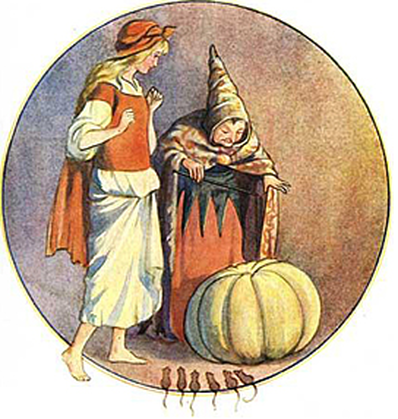|
Unknown artist, "Cinderella," nineteenth century, in Cendrillon at Parson’s Nose by William Goldstein. Hometown Pasadena, October 18, 2012. http://hometown-pasadena.com
|
Cinderella
The pumpkin plays a pivotal role in this classic rags-to-riches fairytale. Its commonness and lack of sophistication epitomized the poor rural way of life in which Cinderella was raised and provided the ultimate foil to the opulent life of the rich and sophisticated in which she would live happily ever after. Later generations of Americans would likely interpret the pumpkin’s transformation into a golden carriage as a glorification of the vegetable and the poor, hard-working way of life it embodied. Yet if other sources from this time period are a fair indication, the pumpkin was an ambiguous symbol, serving as a marker of both a rural abyss and rural virtue.
|

|
|
- Home
- About the Book
- About the Author
-
Online Exhibition
- Just Another Squash: 12,000 BCE to 1600
- From Pumpkin Beer to Pumpkin Pie: 1600 to 1799
- The Making of a Rural New England Icon: 1800 to 1860
- The Pumpkin and the Nation: 1861 to 1899
- Americans Celebrate the Fall Harvest with Pumpkins: 1900 to 1945
- The Changing Nature of Pumpkins: 1946 to the Present
- The Changing Nature of American Rural Economies: 1946 to the Present
- Events
- Contact

